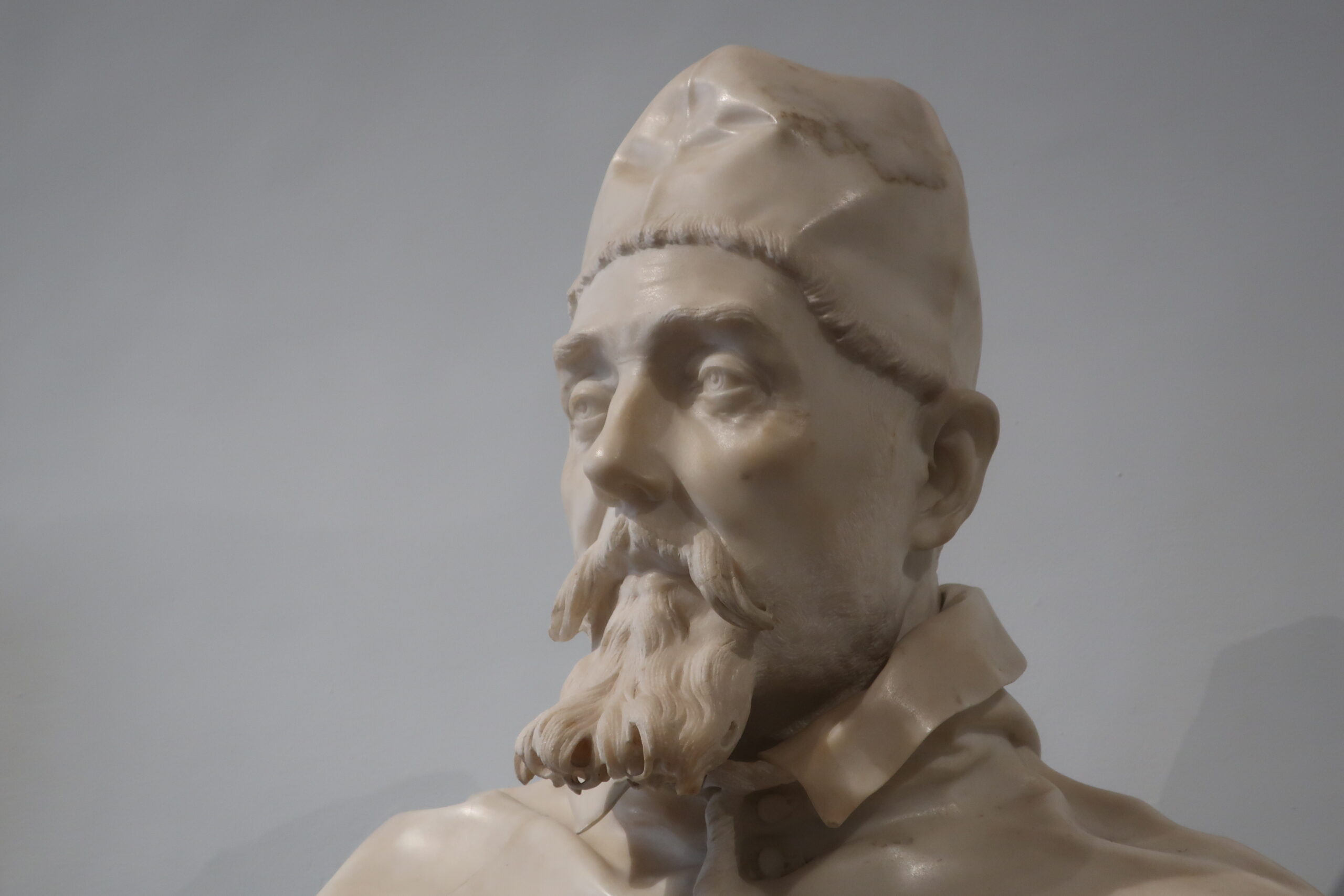Travels in Rome] (23) Bernini's "Portrait of Urbanus VIII" - The secrets of portrait sculpture and its secrets. Learn from Bernini's unique method of human observation.
Previous Article(22) Bernini's "St. Longinus" - A huge sculpture in St. Peter's Basilica. A masterpiece bursting with Bernini's illusions!"In the previous section, we looked at Bernini's "St. Longinus" in St. Peter's Basilica, but in this article, I would like to talk about portrait sculptures, which also occupy an important place in Bernini's sculpture.
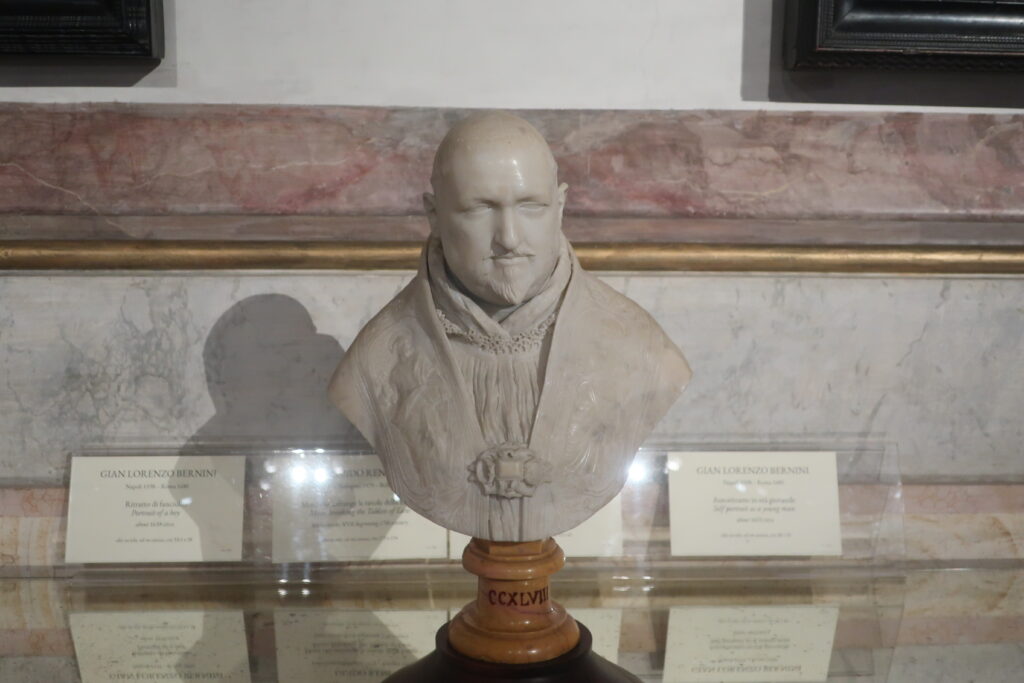
This is "Portrait of Paulus V" by Bernini, owned by the Borghese Museum. This work was made when he was around 20 years old, and is of such quality at the age of 20. Bernini's talent for portrait sculpture blossomed early on. The work to be introduced hereafter is a portrait sculpture by Bernini, which was created when he was about 20 years old.Saint Viviana."andBaldacchino.This work was made when he was entering his thirties after his twenties, when he produced
Portrait of Urbanus VIII" in the collection of Palazzo Barberini - a masterpiece of portrait sculpture!
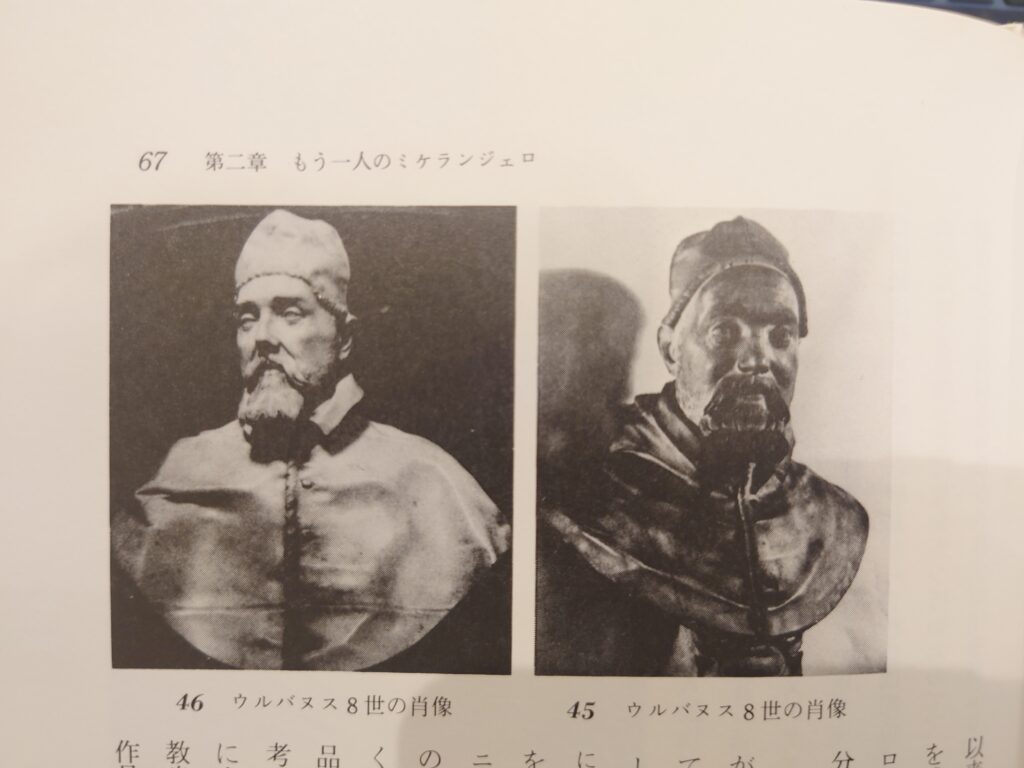
Bernini, who had a special attachment to portrait sculpture, produced many portrait sculptures during the reign of Urbanus VIII. However, after he began work on Baldacchino in 1624, the portraits were often left in the hands of his pupils, and the quality of the work became inconsistent. Nevertheless, there are a few outstanding works among these portraits.
Roman artists of the Baroque period were forced to be deeply involved with their patrons, but Bellini seems to have formed a personal relationship with his patrons, and to have lived off of it. In this respect, he was the opposite of Michelangelo, who stubbornly tried to live in the world of his own ideas. It was this strong interest in human beings that produced the rich harvest of Bellini's portrait sculptures. Let us now turn our attention to the portrait sculptures of Bernini made during the reign of Urbanus VIII.
Just as Velázquez painted numerous portraits of Felipe IV, Bellini produced several marble and bronze busts of Urbanus VIII. These works span the entirety of the pope's reign and provide an excellent record of Urbanus VIII's appearance and state of mind. When he ascended to the throne at the age of fifty-six, the pope boasted a full beard, large bright blue eyes, and a good complexion. He was a handsome man, a good horse rider, and in good health, except for occasional stomach pains. He was not a shy, frank, broadly educated, and deeply religious man. The Pope's character was similar to that of Bernini, and it is not surprising that the two men hit it off well.
To express his respect and affection for the pope, Bernini first created a bust of the newly enthroned pontiff, full of vigor and vitality. Here, Urbanus VIII, with his hat slightly back, and his fair forehead, looks as if he is telling Bernini with passion about his grand plan for the decoration of St. Peter's. His blue eyes are bright, his beard is full, and he has a full beard, and he looks as if he is talking to the pope about his plans for the city. His blue eyes sparkle, his full beard smiles, and his plump cheeks are tinted with the life of middle age.
In Paris, Bernini later said that if a person's hair, beard, eyebrows, eyes, and lips were completely white, even those who were accustomed to seeing him every day would not recognize him, so when he saw a fainted person, he often "did not see the same person. Therefore, it is very difficult to make a marble portrait of only one color look like the model," he said.
He goes on to explain that "in marble portraits, it is sometimes necessary to add something not found in nature in order to imitate it well," such as indentations in the eyes to give a color effect, to compensate for "the defect of sculpture art, which is the inability to apply color. .
This highly suggestive story conveys the extent to which Bellini was concerned about giving life to his portraits, and shows us that he took the issue of color in sculpture very seriously. For him, this was a problem not only for portraits, but for sculpture as a whole, as he described the absence of color as "a defect in sculpture. He tried to find solutions to this problem in various ways. Incidentally, since ancient times, there have been two methods of carving eyes on marble statues: one is to carve the pupil and the other is to carve the surrounding area so that the pupil remains. Michelangelo tried both methods, and Bellini also used both methods as appropriate.
Masumi Ishinabe, Yoshikawa KobunkanBernini, Giant Star of Baroque Art.p65-67
*some line breaks.
The photo above is taken from the book. I returned to Japan without capturing the "Portrait of Urbanus VIII" on the right with my camera. It was a great pity. I could not find a photo of this sculpture on the Internet, so I had no choice but to post a photo of the book here. If I have a chance to visit Rome again, I would like to look for this statue again.
Now, something very important in Bernini's statue making was mentioned in this section.
Sculpture has no color."
I didn't realize this until I was told about it, but yes, this is a tremendous big problem. I was surprised from the bottom of my heart when I read this commentary! We look at a finished sculpture without knowing it, but the sculptor's painstaking work is also engraved on the sculpture.
In Paris, Bernini said that if a person's hair, beard, eyebrows, eyes, and lips were all white, even those who were accustomed to seeing him every day would not recognize him, so when he saw a fainted person, he often "did not see the same person. Therefore, it is very difficult to make a marble portrait of only one color look like the model.The episode of "The Paintings" is a reminder of this very thing. This was the difference between painting and sculpture.
Masumi Ishinabe then continues.
As Urbanus VIII reached the age of sixty, his cheeks became somewhat chubby, his beard thinned, and the vigor and vitality that had characterized his early years on the throne receded, replaced by clear signs of aging. This can be seen in the portrait that Bellini painted for the Pope's book of poetry in 1631 (the original etching is lost). It is assumed that the year after this drawing, when he had finally finished his work on Baldacchino, Bernini took up the work again and produced a bust of the pope. This bust is not only an outstanding portrait of Urbanus VIII, but it is also one of the best works among the many portrait sculptures by Bellini.
Unlike the previous statue, the pope wears his hat neatly and appears to be speaking quietly, occasionally lost in thought. The pope, now in his old age, is even more thoughtful, and Bernini must have felt a certain awe toward him.
Ironically, in the first half of 1633, when this work was supposedly produced, the famous second trial of Galileo had just taken place. Urbanus VIII, when he was Cardinal, had praised Galileo and even corresponded with him. Galileo therefore came to Tokyo as soon as the Pope ascended to the throne, where he was received by Francesco Barberini, the Pope's nephew, and was also granted a friendly audience by the Pope. Galileo knew that the Pope did not personally consider Copernicus' geocentric theory heretical. But he was so overconfident of this that he did not heed the advice of the theologians not to overtly support the geocentric theory out of respect for the first trial, and he published his "Dialogues on Astronomy" without permission. It is said that if Galileo had been a little more prudent, the papacy would not have had to make unnecessary interventions, but at any rate, the final decision was made by the pope himself. Cardinal Barberini approved of Galileo, but Pope Urbanus VIII rejected it.
Masumi Ishinabe, Yoshikawa KobunkanBernini, Giant Star of Baroque Art.p67-68
*some line breaks.
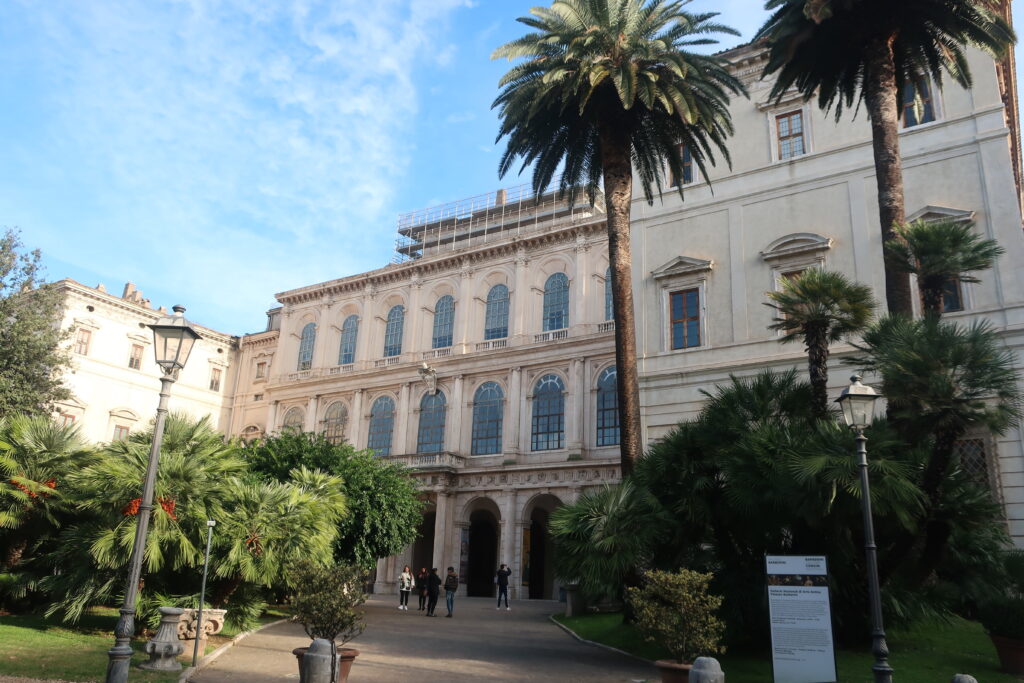
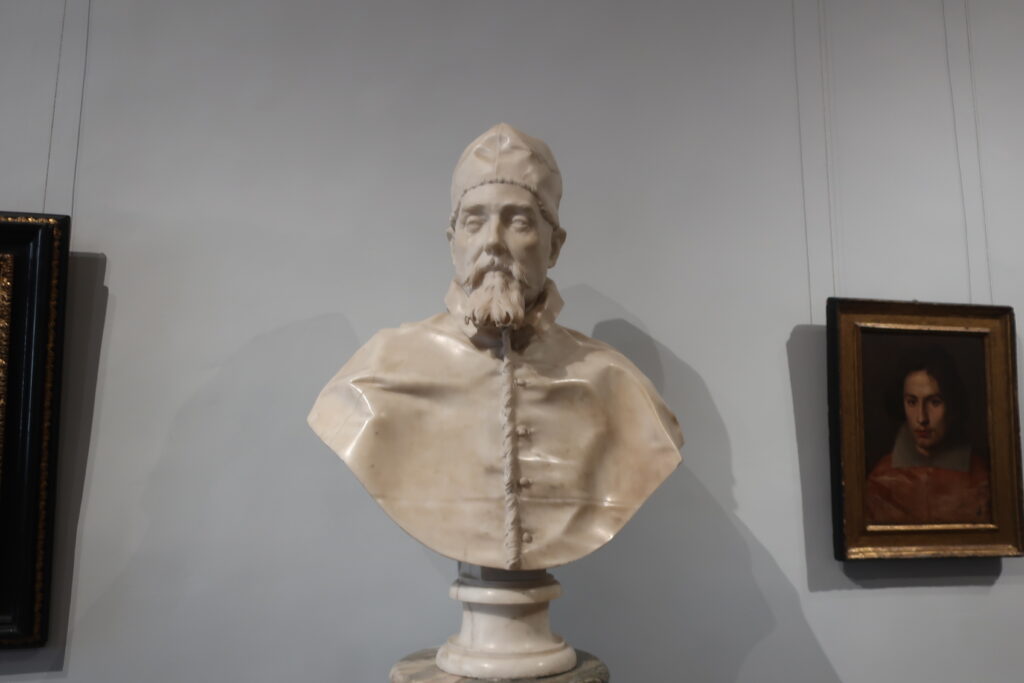
Bernini's "Urbanus VIII" is on display in Palazzo Barberini, also near Piazza di Spagna.
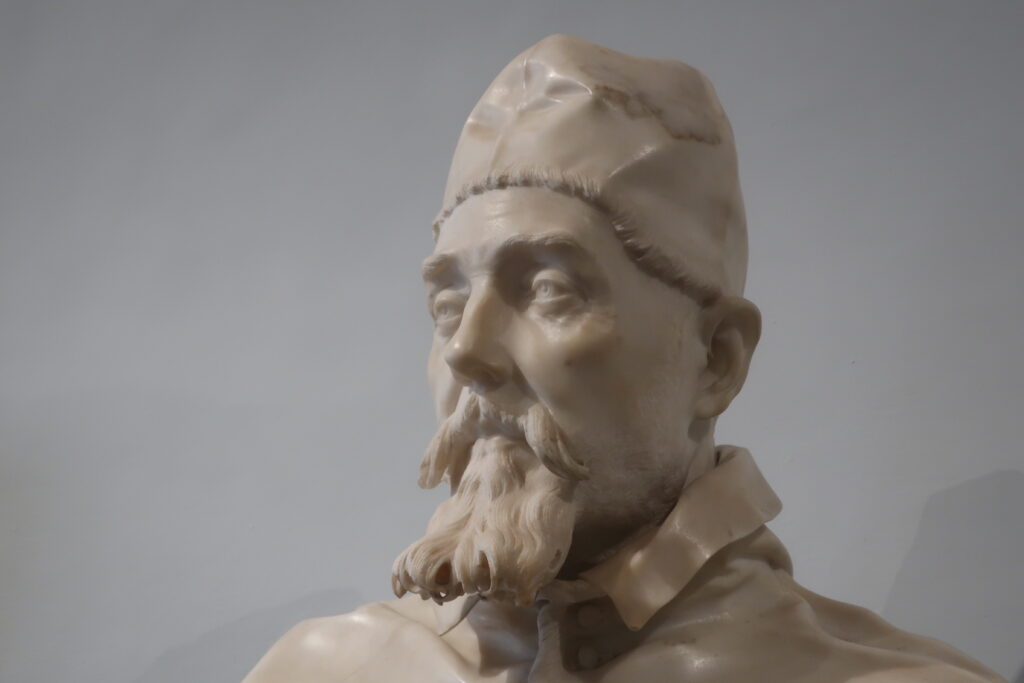
I also came here to see this portrait, and I now understand why it is considered a masterpiece of portrait sculpture.
I could not take my eyes off this sculpture, so much so that I could not move from in front of it for a while.
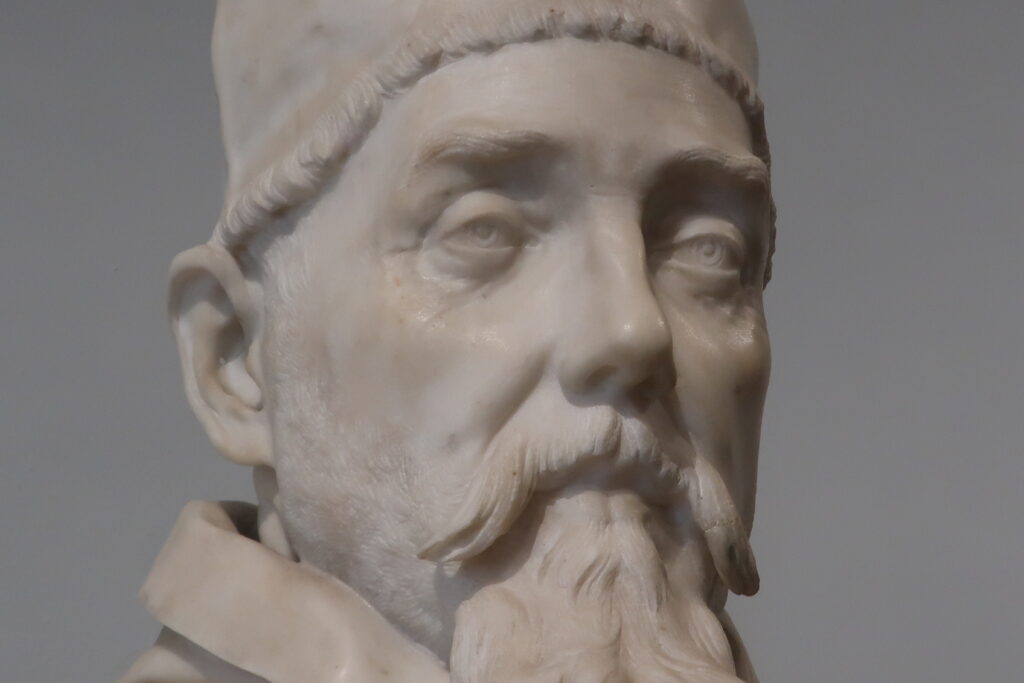
These eyes... And surely the tied lips. As mentioned in the commentary, thoughtfulness comes through.
You can probably tell from this photo how finely this sculpture is carved. In particular, the shading and fine lines around the eyes can only be described as astonishing.
A photograph of this work would inevitably show it as a flat surface. The impression and shock of seeing it up close and personal as a three-dimensional object is .......!
I have never seen such a wonderful portrait. It was an experience that made me wonder from the bottom of my heart if this is what it means to be a masterpiece.
Another masterpiece, "Portrait of Sipione Borghese" from the Borghese Gallery collection.
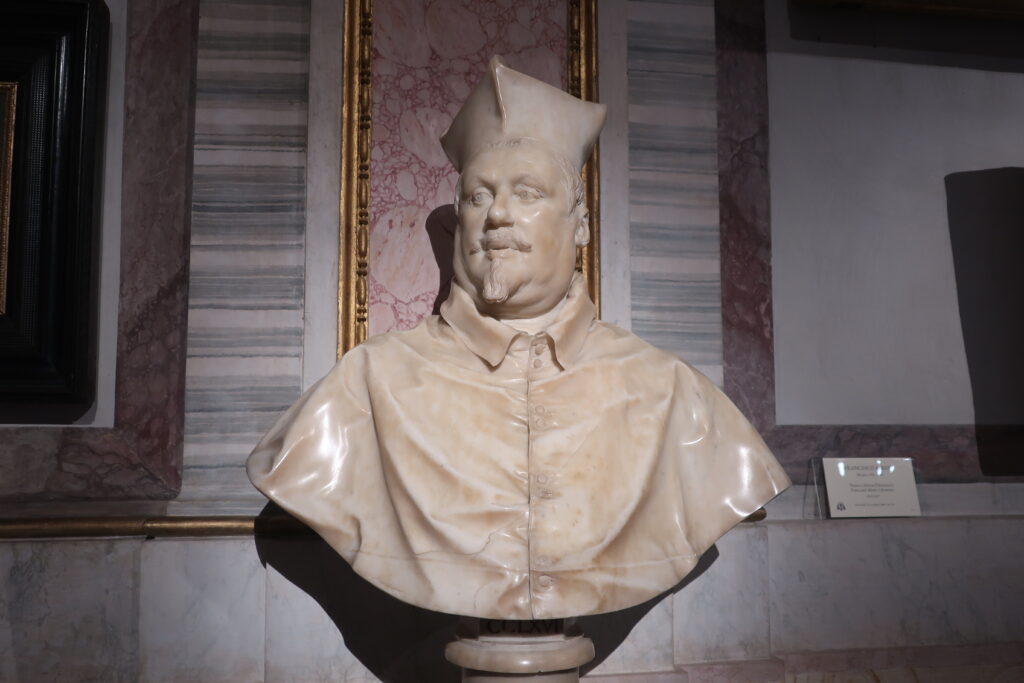
Sipione Borghese died on October 8, 1633, the year before Bellini was ordered by the Pope to create his portrait. Presumably, the Pope waselection of the PopeThe cardinal ordered the portrait as a favor to the cardinal, who had done him a favor on the occasion of his visit to the city of Rome. It is not difficult to imagine that Bernini was pleased to accept the commission. In fact, it is possible that he himself proposed the project and sought the Pope's permission. The portrait of Sipione Borghese is so vivid and full of affection that it makes us think so.
Sipione Borghese is in the center of the throne, speaking in something like a slow tone of voice. The eyes, nose, and throat are each unique, each alive with character. The costumes also play with light, giving the overall impression of warmth and dignity. Sipione Borghese may have been fifty-four or fifty-five years old at this time, but the portrait looks somewhat younger and somewhat more beautified than that.
The need for some beautification in the portrait was acknowledged by Bellini himself. He said later in Paris, "The secret of portraiture is to use as many points of beauty as possible to give the impression of greatness to the whole. While finishing the lips of Louis XIV, he said, "To be successful in portraiture, one must try to capture the action and to express it well. The best way to express the lips is to choose the moment when a person begins to speak or utters a word". Art historians have noted that "Conversational PortraitThe type of portrait that we call "the portrait" was born out of these ideas.
Masumi Ishinabe, Yoshikawa KobunkanBernini, Giant Star of Baroque Art.p69-70
*some line breaks.
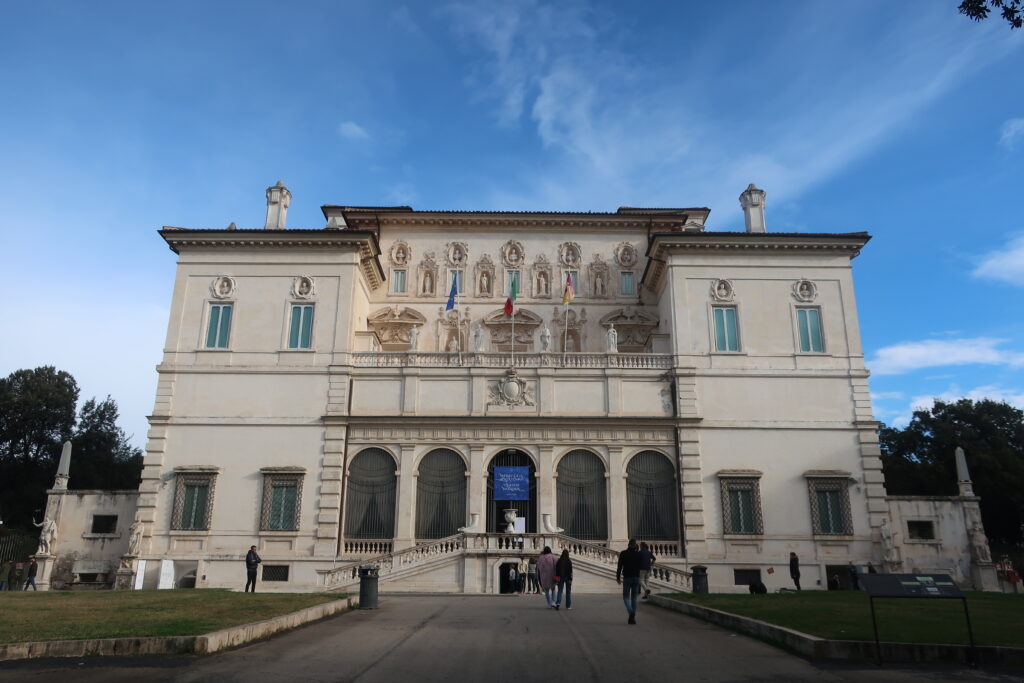

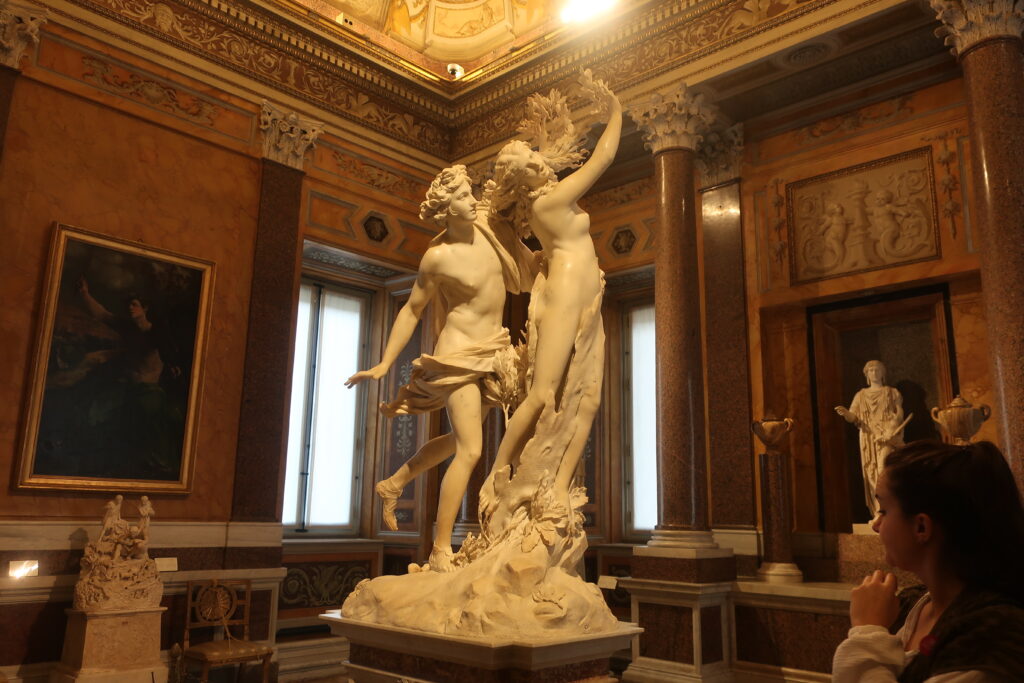
The Borghese Gallery, where "Portrait of Sipione Borghese" is housed, has been mentioned in previous articles. It is Sipione Borghese who was the patron of the young Bernini and the root of the Borghese Museum. He was a great benefactor of Bernini. And Bernini was responsible for the portrait of the young man in his last days.
This work and its commentary may be very important in understanding Bernini's approach to portrait making.
Bernini's unique method of human observation
When attempting to create a portrait, Bernini's method of capturing a person's features was unique. Domenico tells us that Domenico tells us, "He wanted the model not to stand still, but to move and talk naturally, as he always did, so that he could see the model's beauty in its totality. He said this would allow him to see the model's beauty in its totality. When a person is still, they don't look as much like that person as when they are moving. In movement, he represented the model as he was, insisting that it is everything in the person's character that is not in another person that gives the portrait its character." This is the kind of thinking that Bernini applied to the actual creation of his portraits.
For example, when he painted the portrait of Louis XIV in Paris, he observed and sketched the king playing tennis, attending meetings and audiences, and even went out of his way to see the king attend mass. He would go out of his way to see the king attend mass. Bernini made these drawings in order to observe his models, capture their features, and burn the images into his mind. That's why I rarely used them [in the production of my work]," he said. I wanted to create original work, not copy my own work. These drawings were made only to fill me with the image of the king," Bernini explained. These types of drawings, if they had survived, would have been a valuable source of information about the process of production, but unfortunately, with one exception, they have not been passed on to us at all.
Masumi Ishinabe, Yoshikawa KobunkanBernini, Giant Star of Baroque Art.p70-71
I couldn't help but groan, wondering if Bernini's astonishing insight and expressiveness were nurtured in this way.
It is in the casual movements of human beings that their personalities and characteristics emerge. This is interesting.
If I were to appear before Bernini, how would he portray me? I would want to know, but I would also be afraid. I was again impressed by the fact that art is born from such a place.
be unbroken
*The list of articles in the "Rome Travel Journal" can be found atCategory page hereindicates direction or goal (e.g. "to")
*Please visit this category page for recommended books to learn about Rome and Italy.
The Rise and Fall of the Roman Empire, the Vatican, and Roman Catholicism."
The Italian Renaissance and the Revolution in Knowledge."
Next Article.
Click here to read the previous article.
Related Articles











